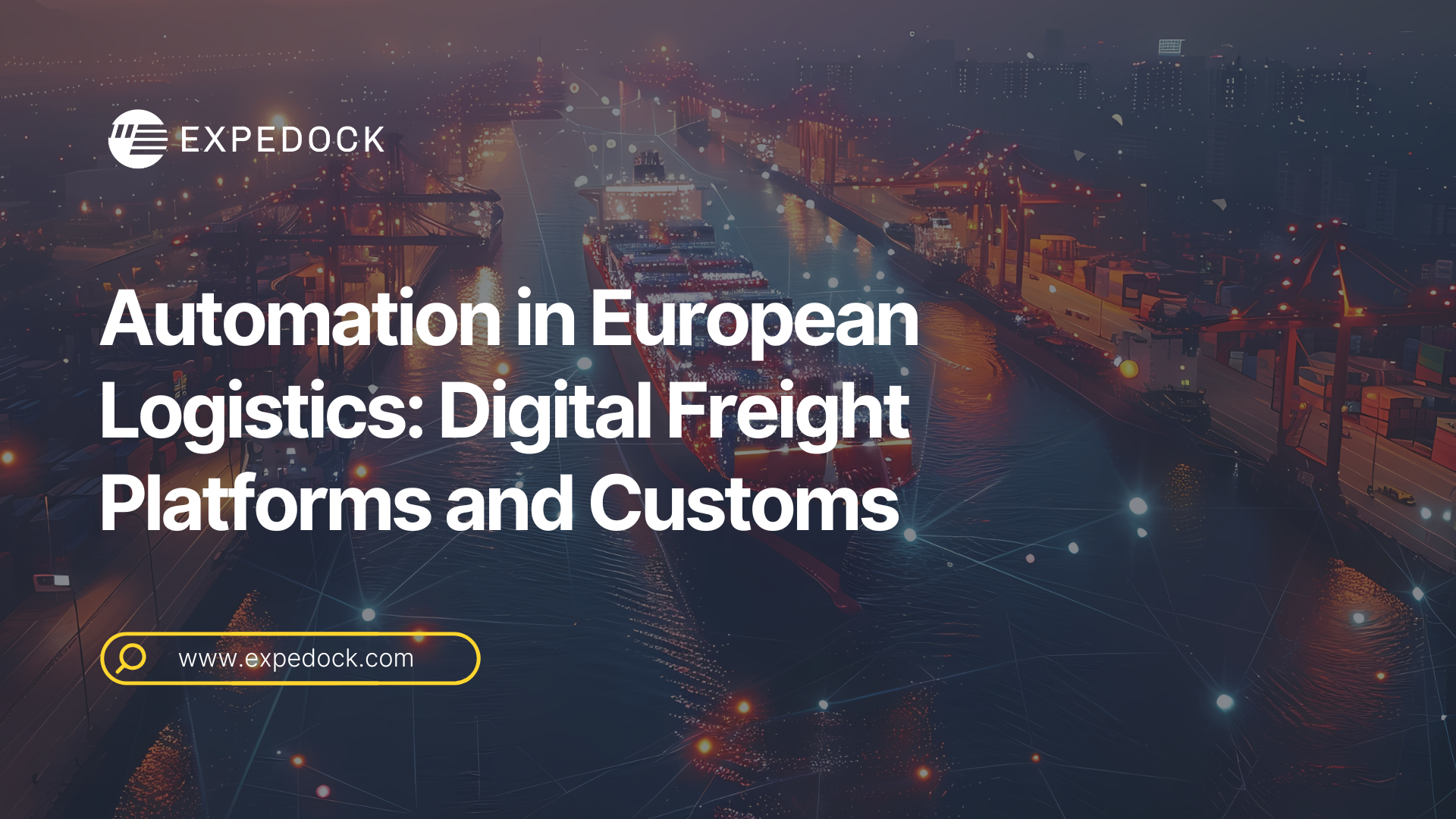
The European freight forwarding and customs industry is massive, generating over €359 billion in annual revenue and employing nearly 1 million people. As e-commerce booms and supply chains become more complex, automation is rapidly transforming how logistics operates. Digital freight platforms and customs automation are driving faster shipments, better visibility, and lower costs across Europe.
Digital freight platforms including online marketplaces and transport management systems – are now widely used across the road freight sector. Surveys show that more than half of road freight bookings in Europe are made through digital channels. Nearly two-thirds of carriers either have or are developing online booking portals. All of Europe’s top 10 road carriers now offer digital freight interfaces.
These platforms offer real-time truck capacity and pricing, instant quoting and booking, and improved fuel and sustainability tracking. DHL’s myDHLi platform, for instance, grew from 1,000 to 3,000 users within four months of launch. Online shipments rose by 56% year-over-year in early 2021. DSV Panalpina now handles 90%+ of its road freight digitally. Companies using digital platforms report fewer empty miles, faster backhaul matching, and significant cost savings.
The global digital freight market is expected to reach $248 billion by 2030, growing over 30% annually. In Europe, startups like sennder are driving this shift by creating digital FTL networks linking over 40,000 trucks. In short, digital freight systems have moved from pilot to mainstream adoption.
Customs automation is advancing alongside freight tech, driven by EU-wide reforms. The eFTI Regulation (2020) mandates that by 2027, all EU authorities must accept digital transport documents like the eCMR. The European Commission expects this to save over €27 billion in paperwork and administrative costs over two decades.
The rollout of the New Computerised Transit System (NCTS) Phase 5 in 2023 introduced a standardized electronic transit declaration across all EU Member States. By early 2025, all EU countries were live with the new system. At the same time, ICS2 (Import Control System 2) is phasing in a single advance cargo declaration format. By September 2025, all freight modes (air, road, rail, sea) will be filing electronically via ICS2.
The impact is substantial. Companies that automated customs filing reduced clearance times by up to 40% and achieved 99.9% data accuracy, virtually eliminating manual entry errors. With digital customs APIs and automated data hubs, forwarders save hours of staff time, avoid rekeying errors, and improve customer satisfaction. DHL, for example, significantly shortened invoice processing cycles through automation.
Adopting digital freight and customs tools delivers measurable advantages:
Case in point: a European forwarder using automated customs hubs cut clearance times from hours to under an hour. Another firm’s AI system auto-filled tariff codes, reducing customs audits by 25%.
Despite rapid growth, barriers remain. Smaller forwarders often rely on legacy systems or manual workflows. A lack of interoperability between national systems also slows seamless adoption. A document accepted in one country may not be compatible in another without standardized formatting.
Regulations can be complex for SMEs. CLECAT (the European Association for Forwarding and Customs) notes that smaller firms often find compliance burdensome and tech adoption costly. Many turn to third-party platforms, which brings recurring software fees and new dependencies.
Another challenge is data quality. Automated systems depend on clean, standardized inputs. Poor data like outdated tariff codes or inconsistent supplier names – can still cause customs delays. Finally, the shift to digital raises cybersecurity concerns. As operations move online, forwarders must comply with EU rules like NIS2 and secure their digital infrastructure.
The EU and its logistics sector are pushing forward. Investment in automation, AI, and paperless customs continues to grow. Blockchain pilots in ports and EU corridors promise enhanced shipment visibility. Single-window customs platforms are being developed to centralize filings.
Transport Intelligence reports that digitalization and automation will remain top investment priorities for European logistics providers through 2025 and beyond. As regulatory frameworks mature and technologies improve, freight forwarders who adopt early will gain a competitive edge.
Automation is no longer optional for freight forwarders, it’s foundational. The shift toward digital platforms and customs systems is delivering proven gains in speed, accuracy, and efficiency. Forwarders that invest now in integrated digital tools will be best positioned for the future of European logistics.
Kickstart your automation journey with Expedock. Book a free consultation today.
Let us help you optimize business processes and deliver unrivaled customer experience to your clients.